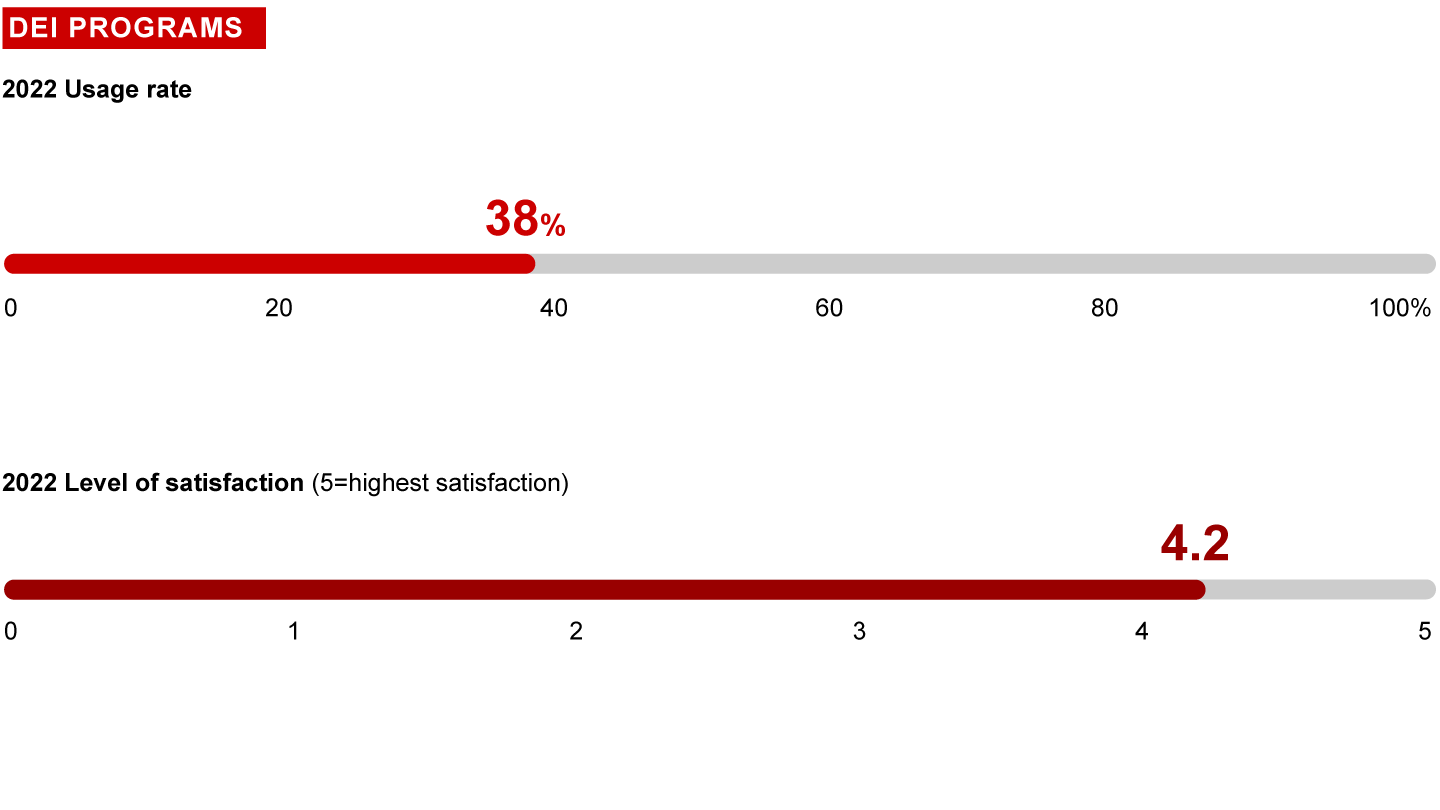Management Tools
What Are Diversity, Equity, and Inclusion Programs?
Diversity, Equity, and Inclusion (DEI) Programs are policies that aim to improve the work environment in three areas.
- Diversity: strengthening the organization by increasing the representation of historically underrepresented groups
- Equity: ensuring structures and processes are designed to promote fair treatment
- Inclusion: creating a culture in which individuals feel they belong in the organization

While some consider DEI a human resources program, the scope is much broader. Successful programs embed DEI in everyday behaviors, processes, and business practices.
How Are Diversity, Equity, and Inclusion Programs Implemented?
Successful DEI programs require companies to:
- Build leadership commitment from all levels in the organization
- Collect and regularly assess data on talent demographics, cognitive diversity, employee engagement, and culture
- Set a DEI ambition and holistic strategy and monitor results
- Prioritize and sequence DEI initiatives, such as:
- Improving hiring and promotion processes to reduce barriers and bias
- Revising compensation to ensure adequate, equitable wages and supportive benefits
- Developing and delivering DEI training to build awareness and support
- Establishing forums to build communities for diverse populations
- Implementing systems to ensure a company’s impact on external stakeholders (e.g., customers, suppliers, and the broader community) is aligned with the company’s DEI strategy
- Pilot initiatives, review results, and refine the approach
- Communicate learnings and progress
Related Topics
What Are the Common Uses for Diversity, Equity, and Inclusion Programs?
Companies establish DEI programs to:
- Foster a culture of belonging, support, and trust
- Increase levels of representation in an organization
- Improve rates and quality of recruitment and hiring
- Increase rates of retention and internal promotion
- Generate better business outcomes enabled by more diverse teams
- Reduce reputational and financial risk

Management Tools & Trends 2023
On the 30th anniversary of our survey, managers seem surprisingly upbeat.
First published in janeiro 2023
